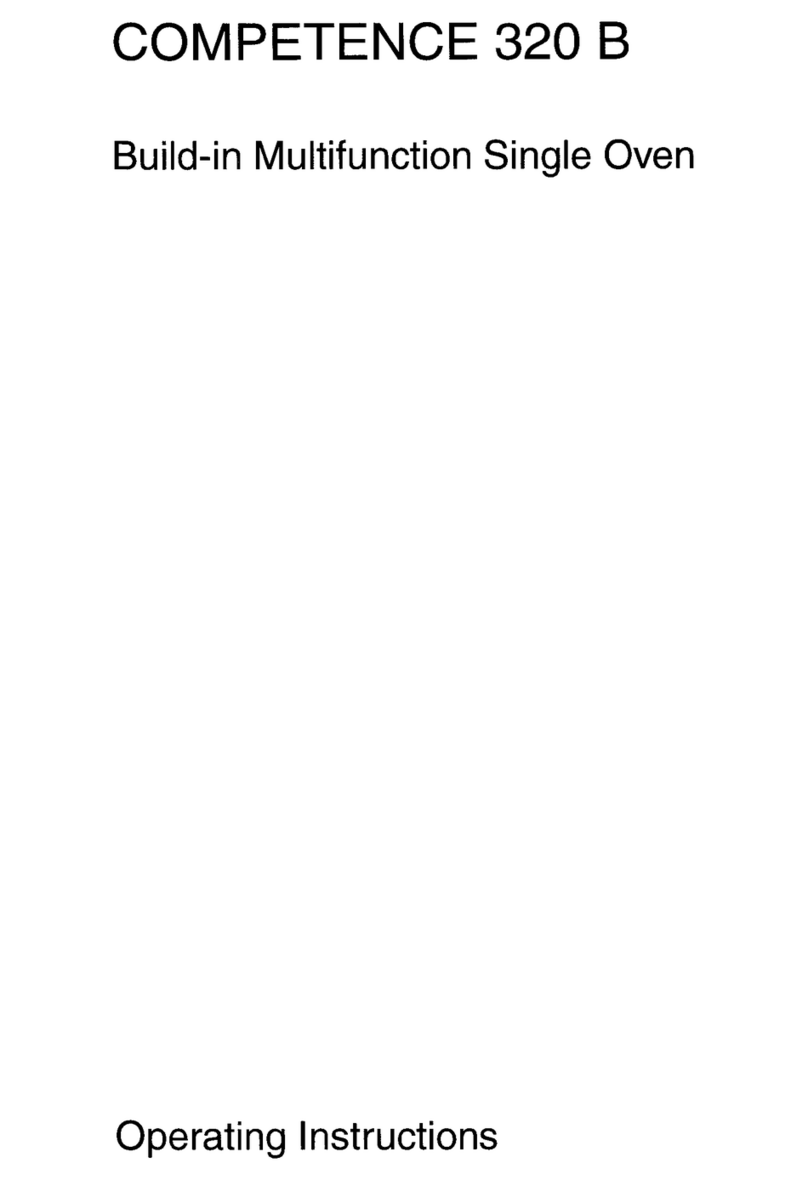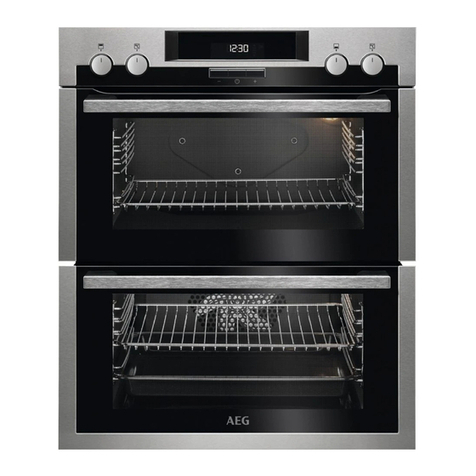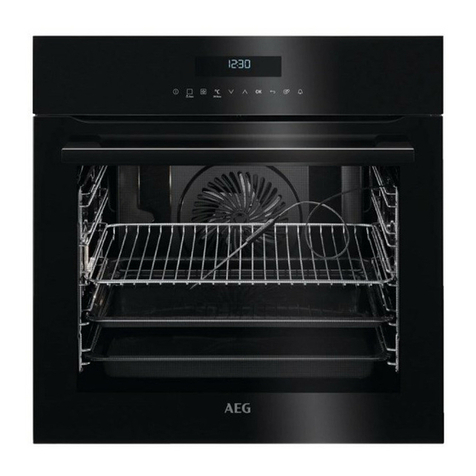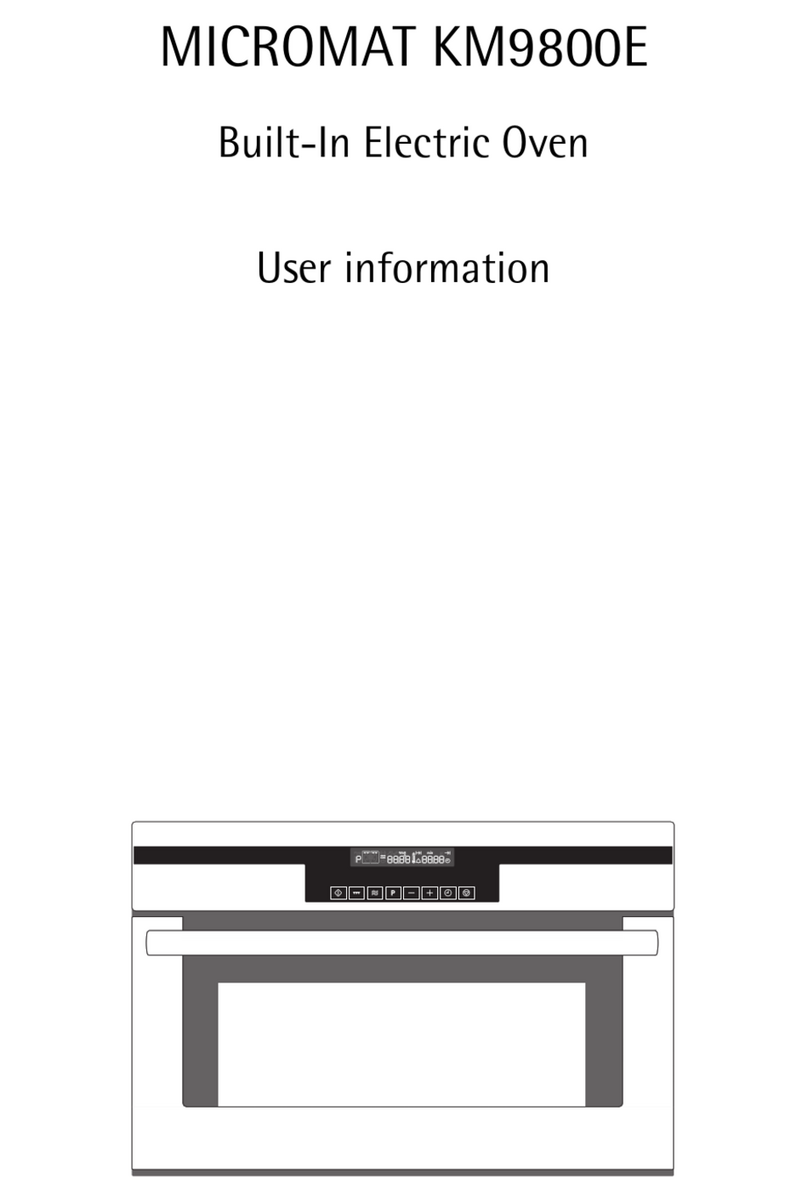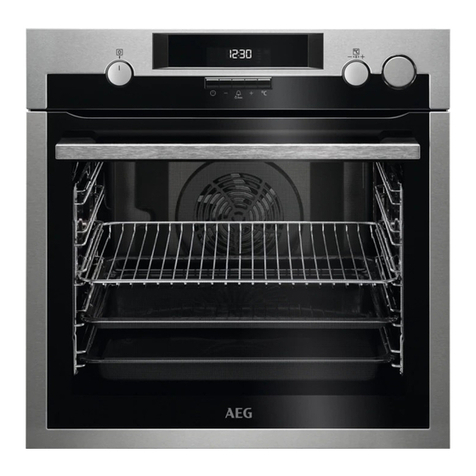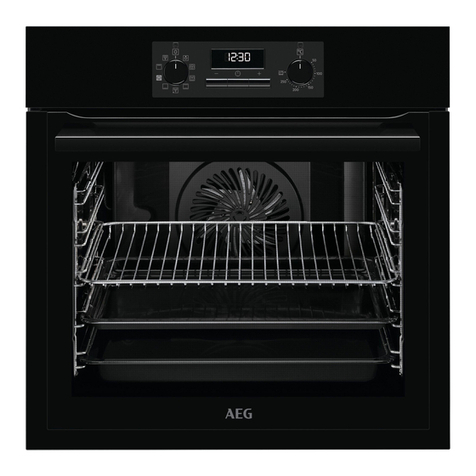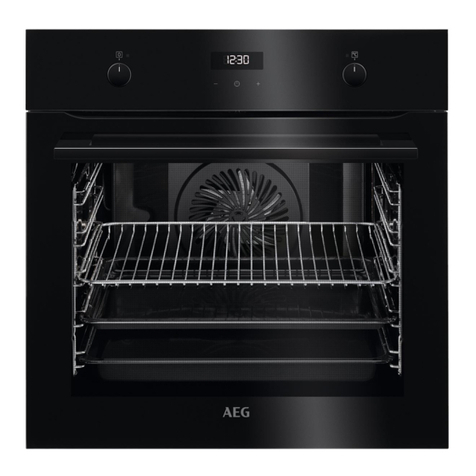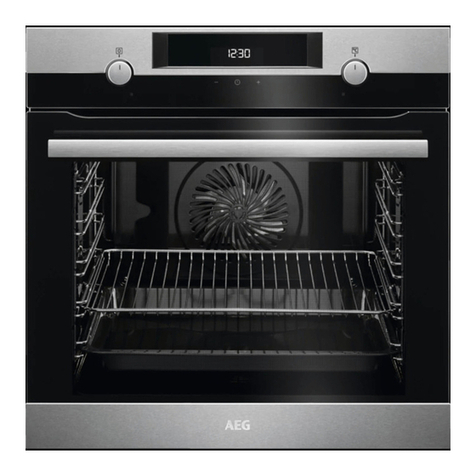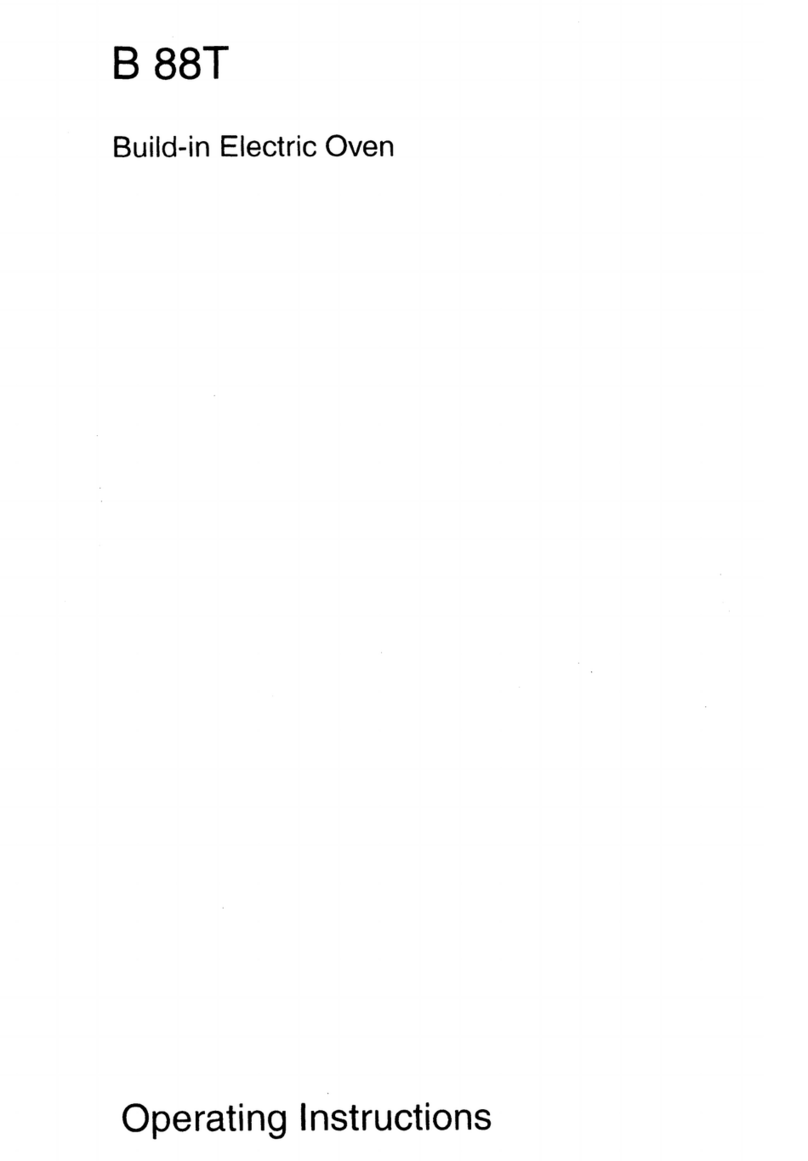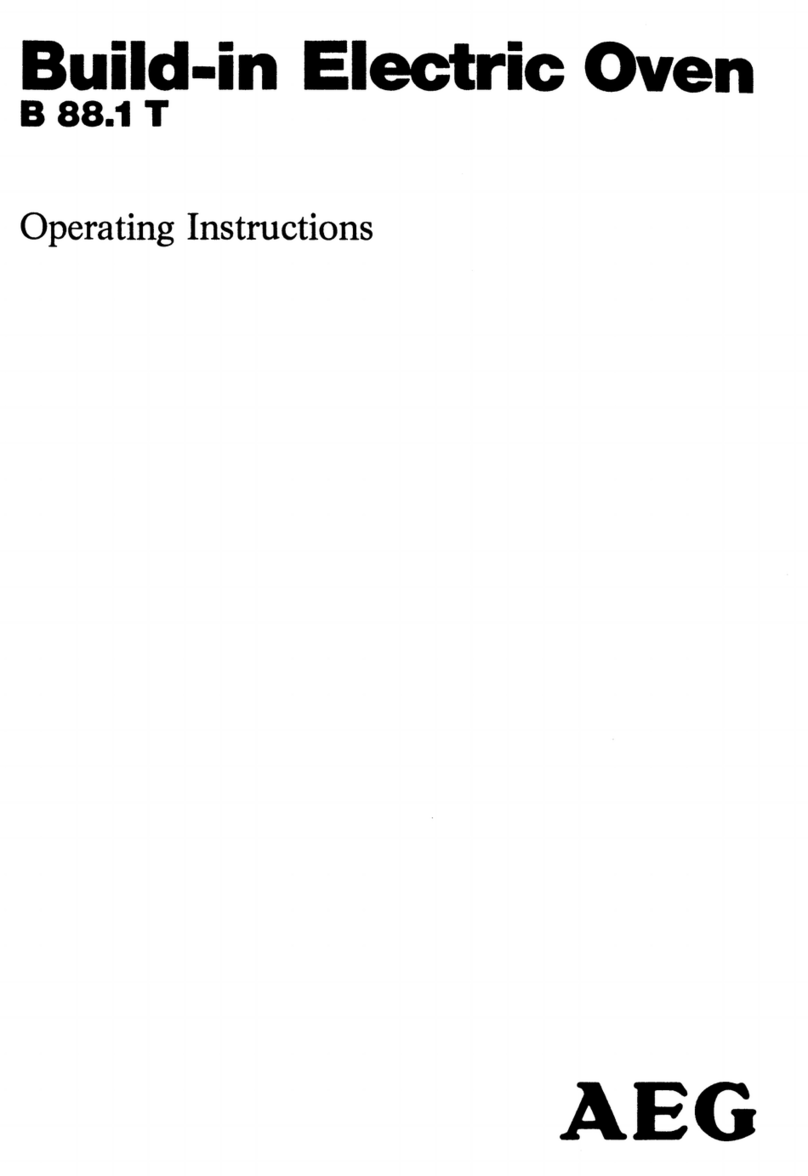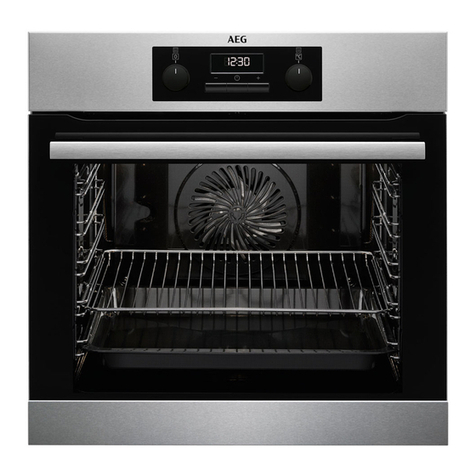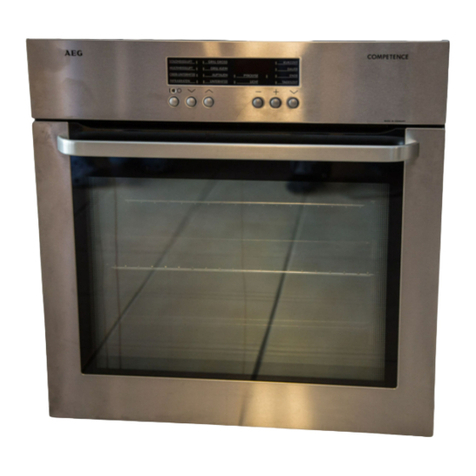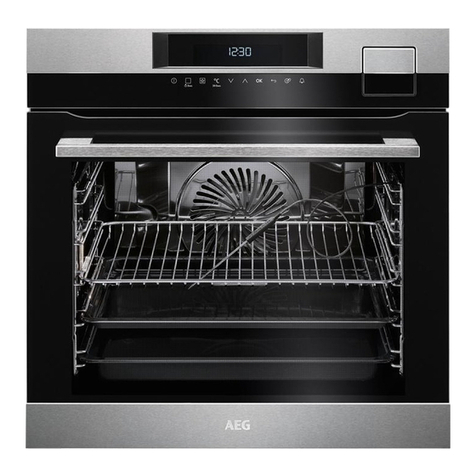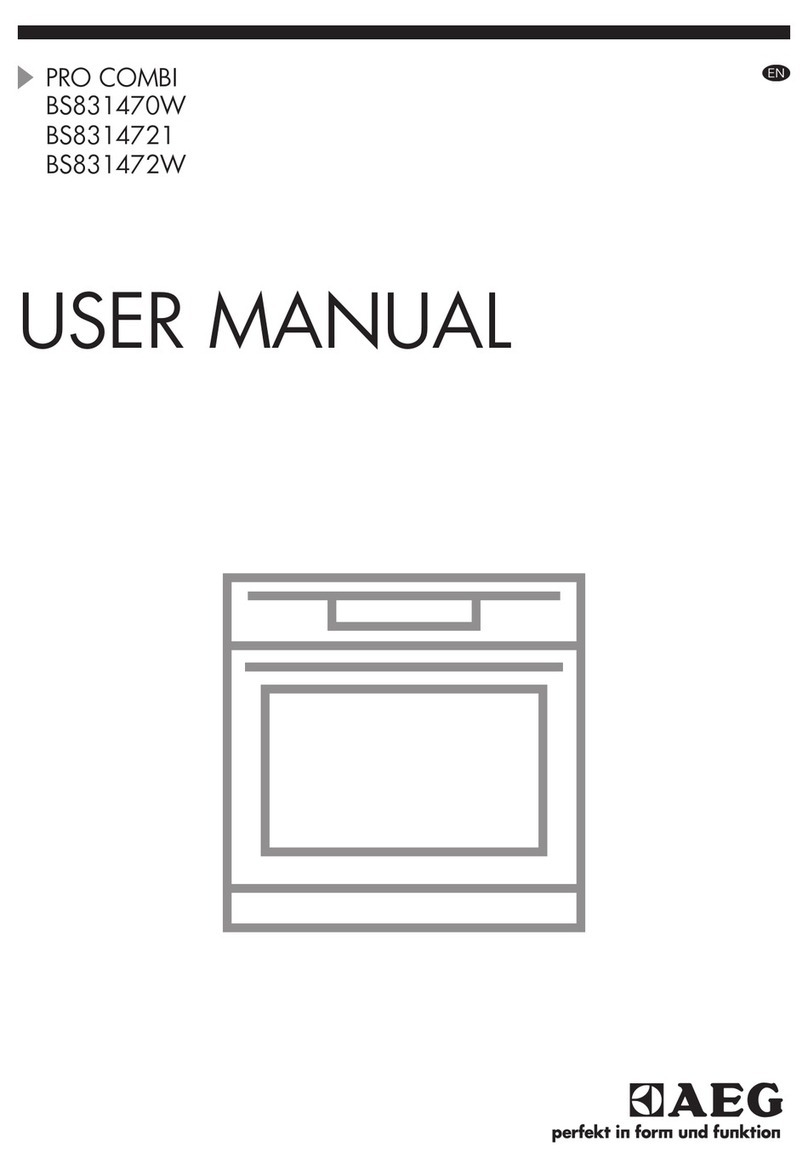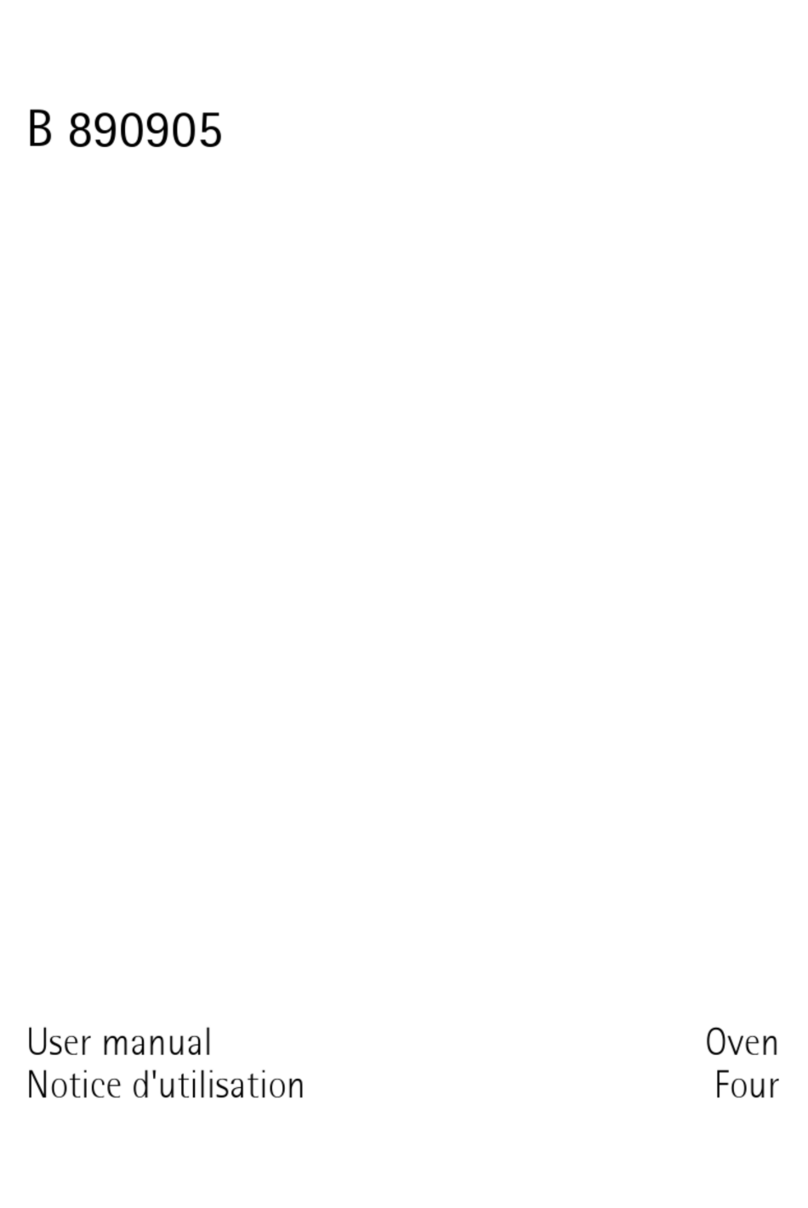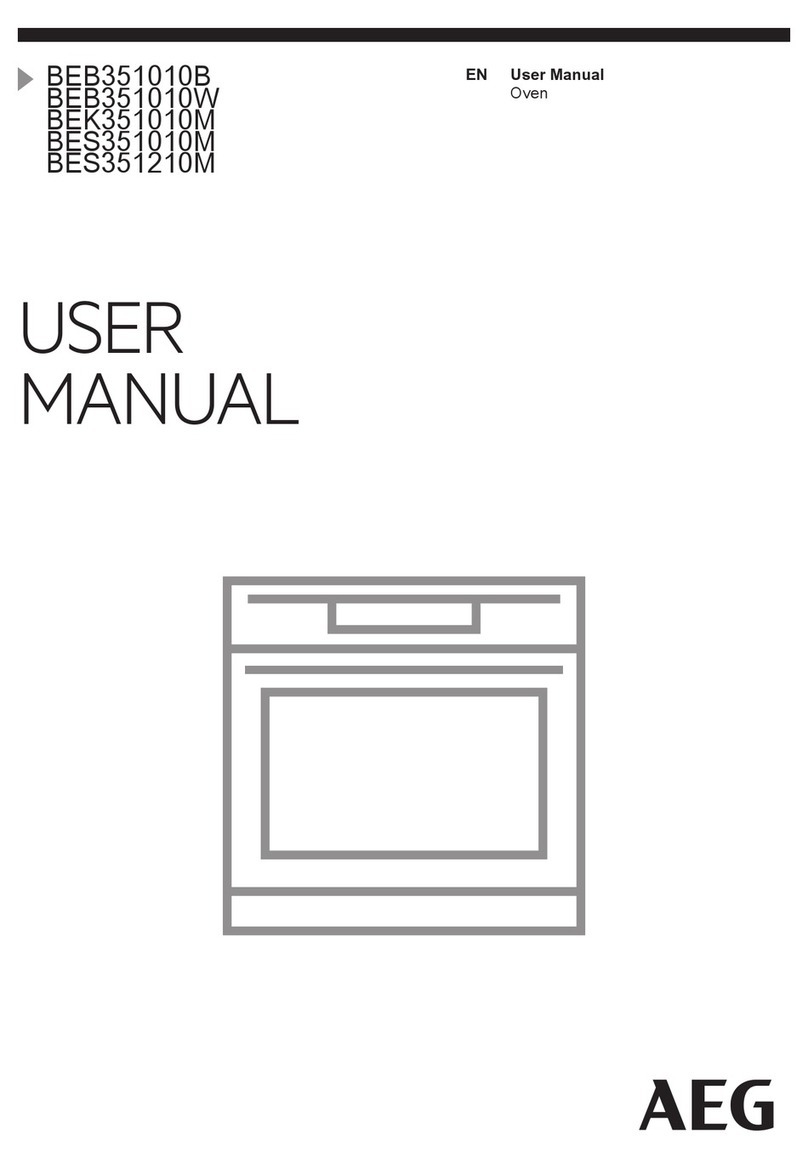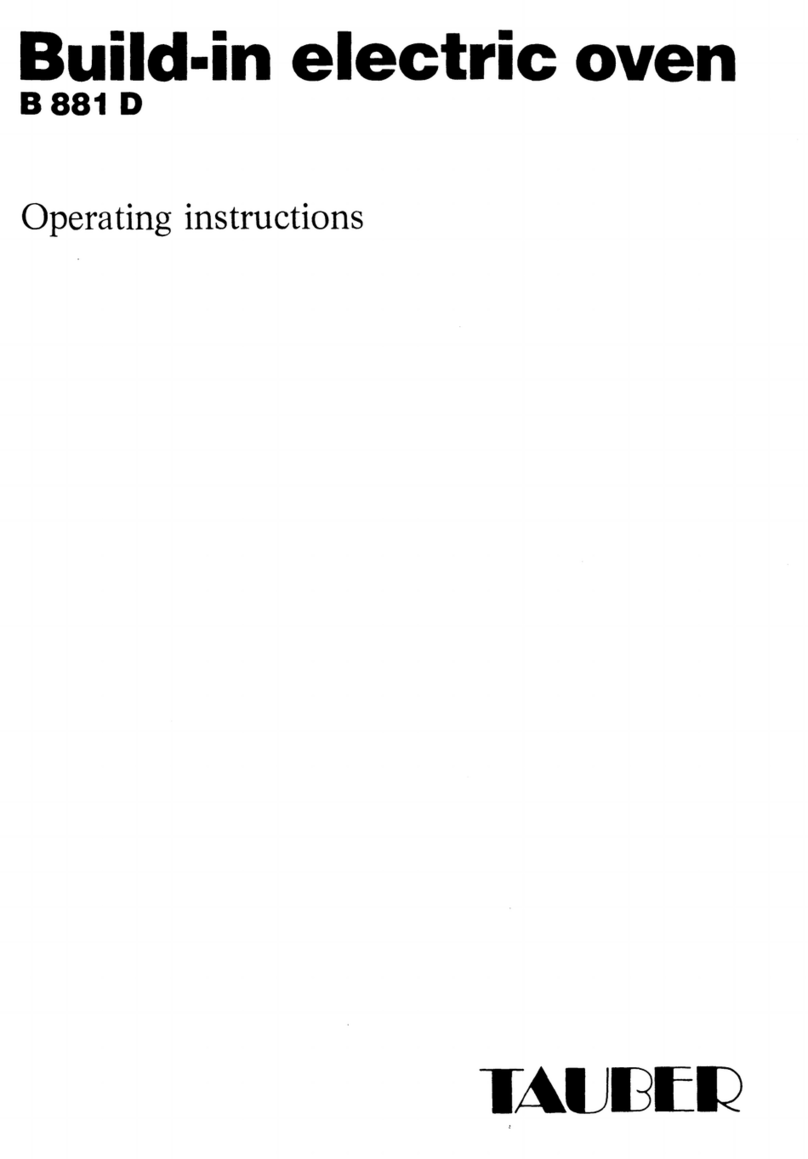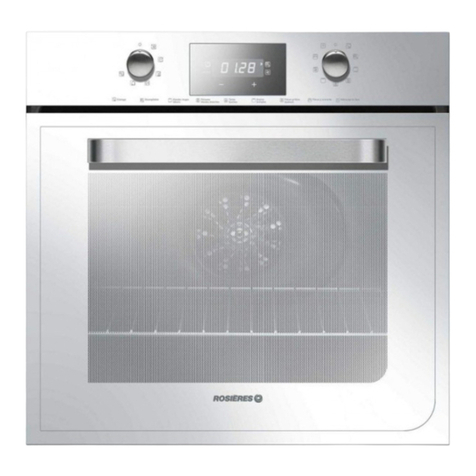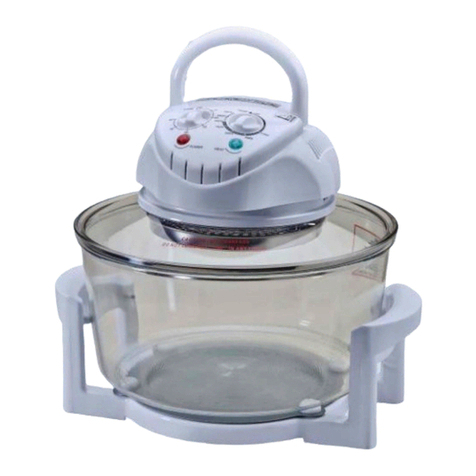3Operating Instructions
Operating Instructions
1Safety instructions
Electrical safety
•This appliance must be only connected by a registered electrician.
•In the event of a fault or damage to the appliance: Take the fuses out or switch off.
•Repairs to the appliance must only be carried out by qualified service engineers.
Considerable danger may result from improper repairs. If repairs become necessary,
please contact our Customer Services or your dealer.
Child Safety
•Never leave children unsupervised when the appliance is in use.
Safety whilst using
•People (including children) who, because of their physical, sensory or mental capabili-
ties or their inexperience or ignorance are not able to use the device safely, should not
use this device without supervision or instruction by a responsible person.
•This appliance is intended to be used for cooking, roasting and baking food in the
home.
•Take care when connecting electric appliances to sockets nearby. Do not allow con-
necting leads to come into contact with or to catch beneath the hot oven door.
•Warning: Risk of burns! The interior of the oven becomes hot during use.
•Using ingredients containing alcohol in the oven may create an alcohol-air mixture
that is easily ignited. In this case, open the door carefully. Do not have embers, sparks
or naked flames in the vicinity when opening the door.
3Information on acrylamides
According to the latest scientific knowledge, intensive browning of food, especially in
products containing starch, can constitute a health risk due to acrylamides. Therefore we
recommend cooking at the lowest possible temperatures and not browning foods too
much.
How to avoid damage to the appliance
•Do not line the oven with aluminium foil and do not place baking trays, pots, etc. on
the oven floor, as the heat that builds up will damage the oven enamel.
•Fruit juices dripping from the baking tray will leave stains, which you will not be able
to remove. For very moist cakes, use a deep tray.
•Do not put any strain on the oven door when open.
•Never pour water directly into the oven when it is hot. This could cause damage to or
discolouration of the enamel.
•Rough handling, especially around the edges of the front panel, can cause the glass to
break.
•Do not store any flammable materials inside the oven. These could ignite when the
oven is switched on.
